60s Black Male Hairstyles – The 60s were a defining decade in fashion, culture, and self-expression, and the hairstyles of Black men have been the center of the revolution. This was the time when the daring, iconic appearance was not only about style but also about identity, pride, and empowerment. Hairstyles during the 60s had a message; they expressed the zeitgeist of the 60s; from easily groomed, strict haircuts to natural, unashamed Afros. These old-fashioned styles have always been timeless and are now re-emerging in the fashion of modern men.
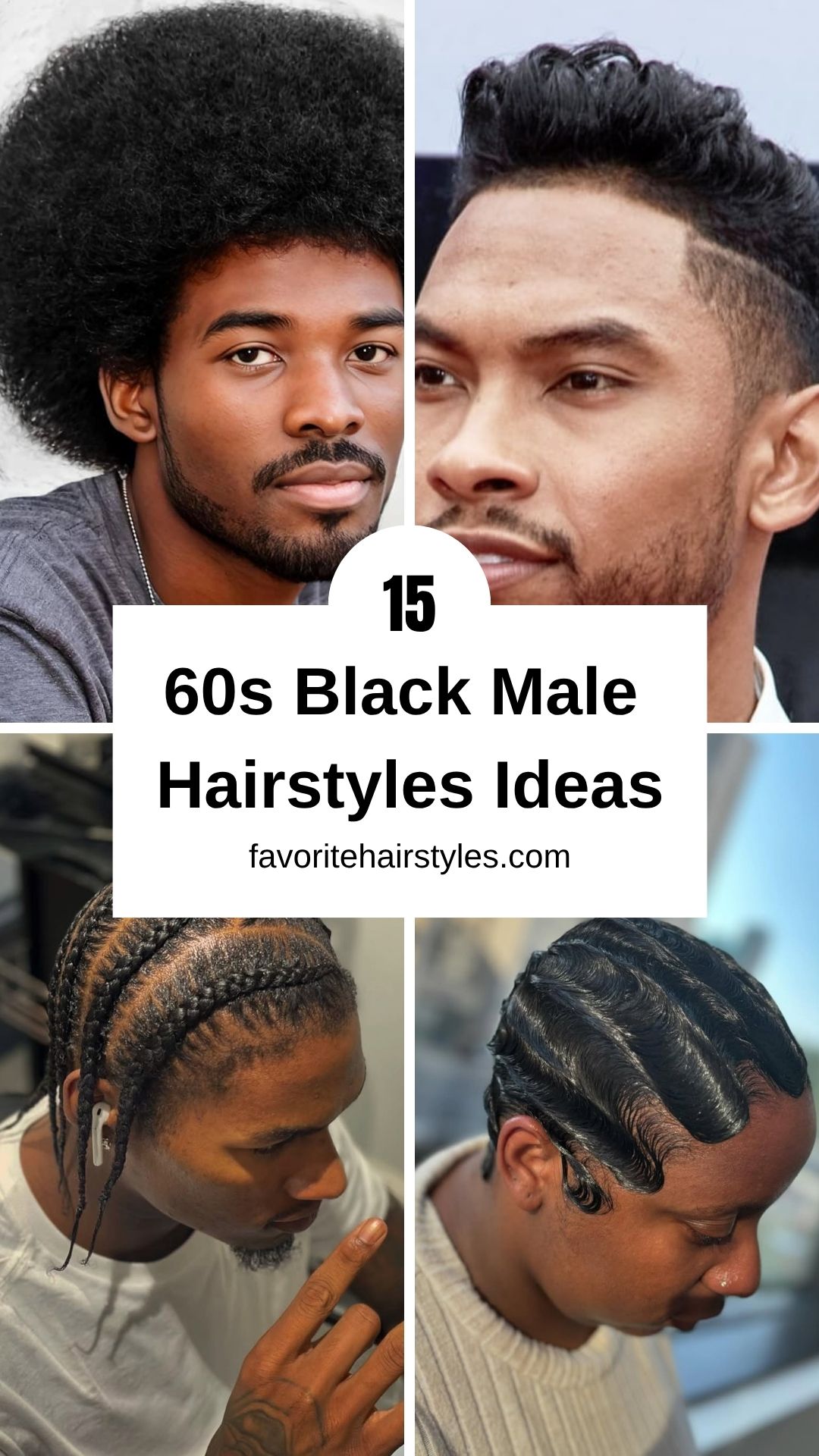
Within this decade, Black men took on both well-groomed, refined fashions based on the entertainer and civil rights leaders, and natural fashions that could be boastful of their culture. These hairstyles were glamorous and powerful to personal appearance, whether one wore them in a harp suit or an ordinary outfit. These vintage looks are still inspiring the new generations today and combining old-fashioned with new imagination. We are going to discuss some of the most iconic 60s 60s black male hairstyles in this blog, their styling tips, and their relevance.
Top 10 60s Black Male Hairstyles Ideas
Here are some old hairstyle ideas to inspire your 60s black Male Hairstyles:
Classic Afro
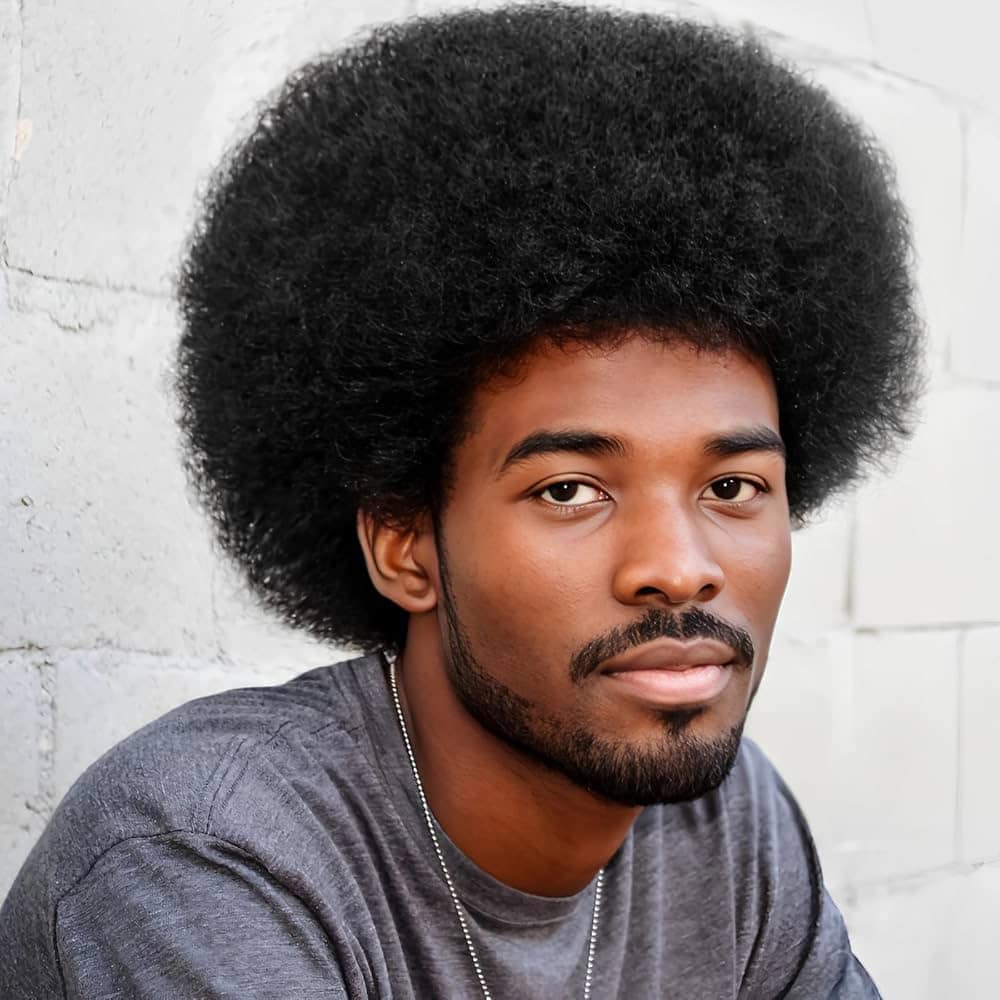
Credit@van.caldwell1
The Afro was a classic indicator of Black pride during the 1960s. The hairstyle praises the texture of natural hair and volume in the head in a rounded manner. To have an ideal Afro, one has to grow hair evenly and make it stay in the same shape with the help of a wide-tooth comb or a wide-tooth comb. Natural oils and moisturizers keep the hair soft, healthy, and frizz-free. This was an unashamed, brash gaze popularized by musicians, activists, and actors of the day. The Afro is eternal nowadays, and it makes a statement of confidence, heritage, and uniqueness, and goes well with casual as well as business clothes.
Conk Hairstyle
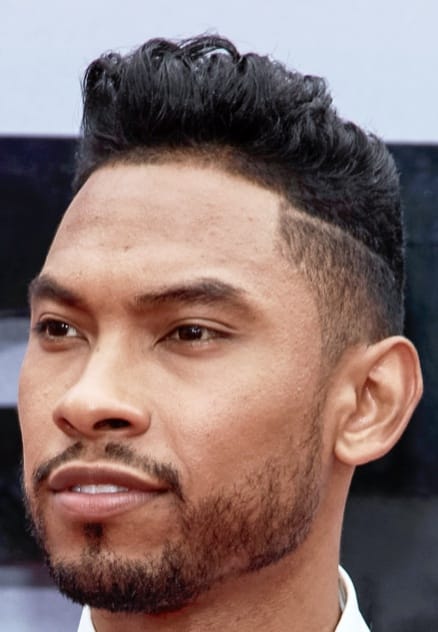
Credit@_letmotellit_
The Conk was an untangled haircut that was made via a chemical relaxer to straighten curly hair. It was normally cut back or to the side in a glossy finish, typically with pomades. The Conk became a popular look as popularized by such entertainers as James Brow,n and appeared sophisticated and polished. Although it also had to be maintained regularly so as not to be damaged, it was considered stylish and a social status in the 1960s. This retro appearance is an option that suits men who want to feel retro and have shiny and manageable hair. The contemporary ones can dilute the chemical to healthier hair, but retain the same slick look.
Cornrows
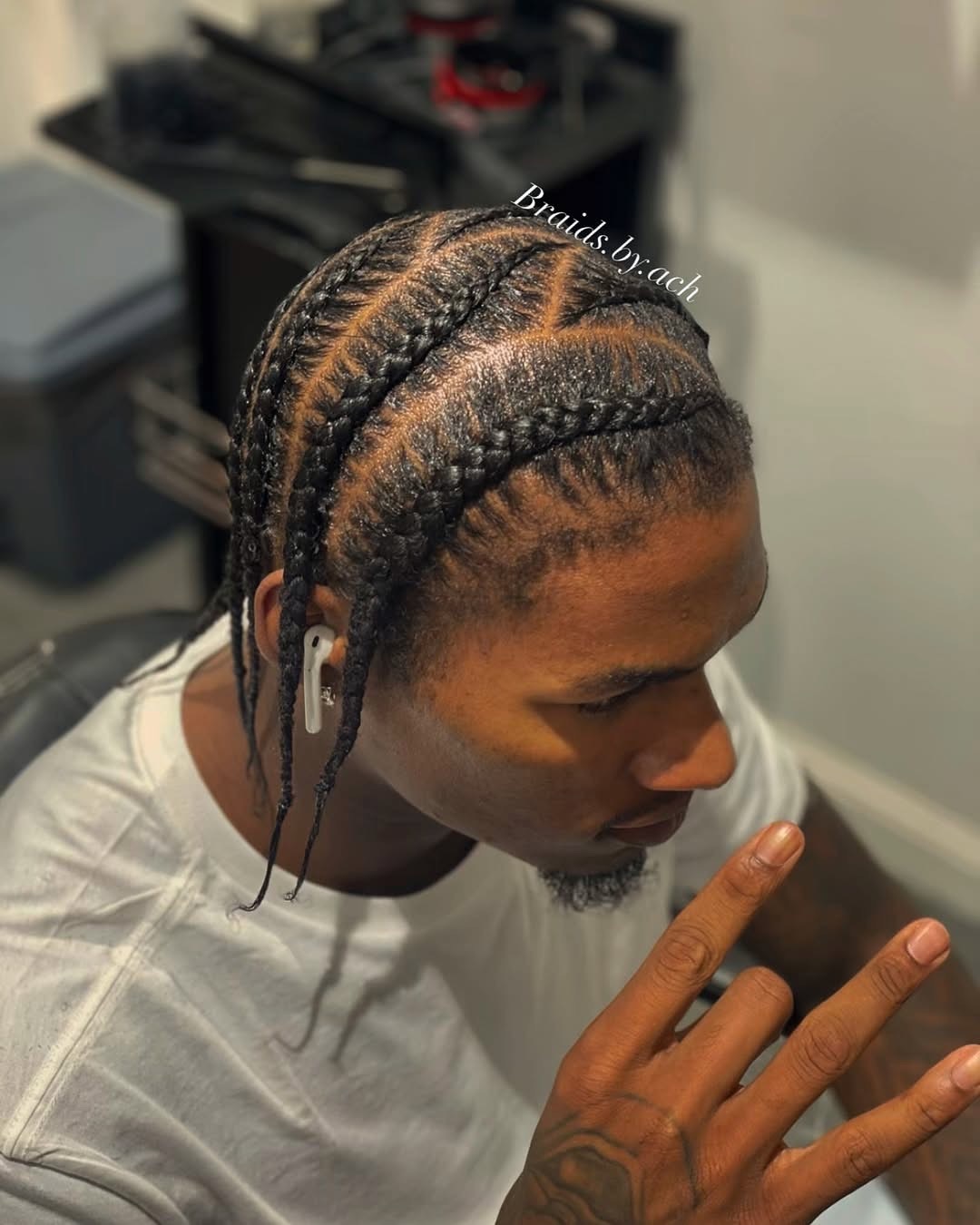
Credit@braids.by.ace
Cornrows are close-lying, sharp, and patterned rows of braids, made close to the head. This was a no-fuss hairstyle of the 1960s, which could be restyled and remained in place throughout the rest of the week. Cornrows represented the pride of the heritage and culture, but they also gave the men the opportunity to be creative and make elaborate designs. These braids were commonly adorned with beads and were worn by both young men and celebrities. Cornrows are not restrictive and can be worn during a casual, professional, or formal event. They also stop the breakage of hair and present a natural texture. This style remains popular today as people seek to have heritage and modern design elements merged.
Low Taper Cut
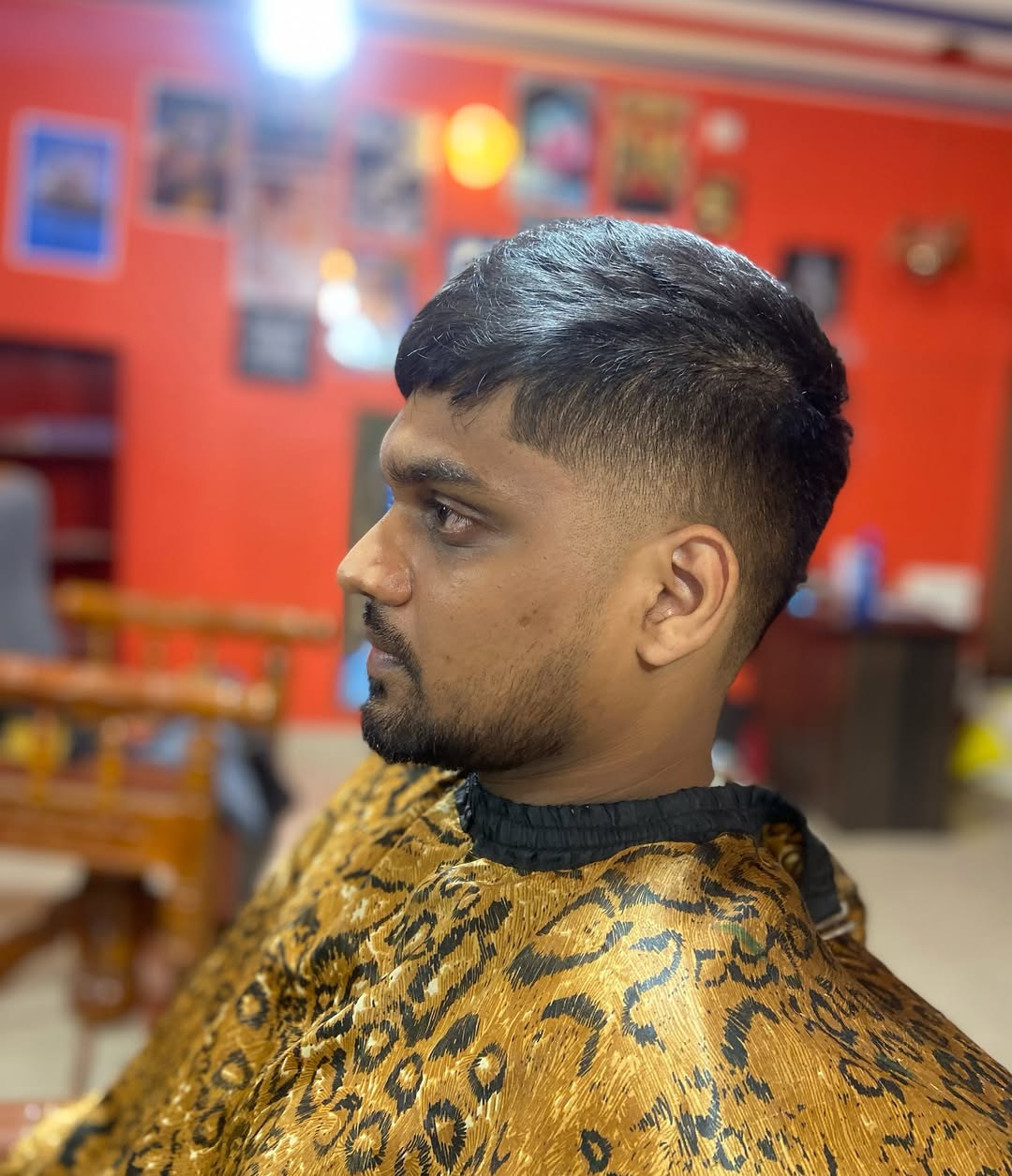
Credit@the_fat_barber
Low taper cut has short and well-faded sides with a little longer top hair, which provides a neat and professional appearance. This style was popular amongst men in both professional and urban environments and was popular in the 1960s. It is also easy to maintain and to wear on naturally curly or wavy hair. Frequent trimming also maintains edges and styles, providing greasy hair with a shine and appearance. The simplicity and elegance of the low taper meant that it was a classic appearance, which suited an individual who wanted to be sophisticated and not have to make the hair look stylish like other hairstyles, such as the Conk or Afro.
Wavy Finger Waves
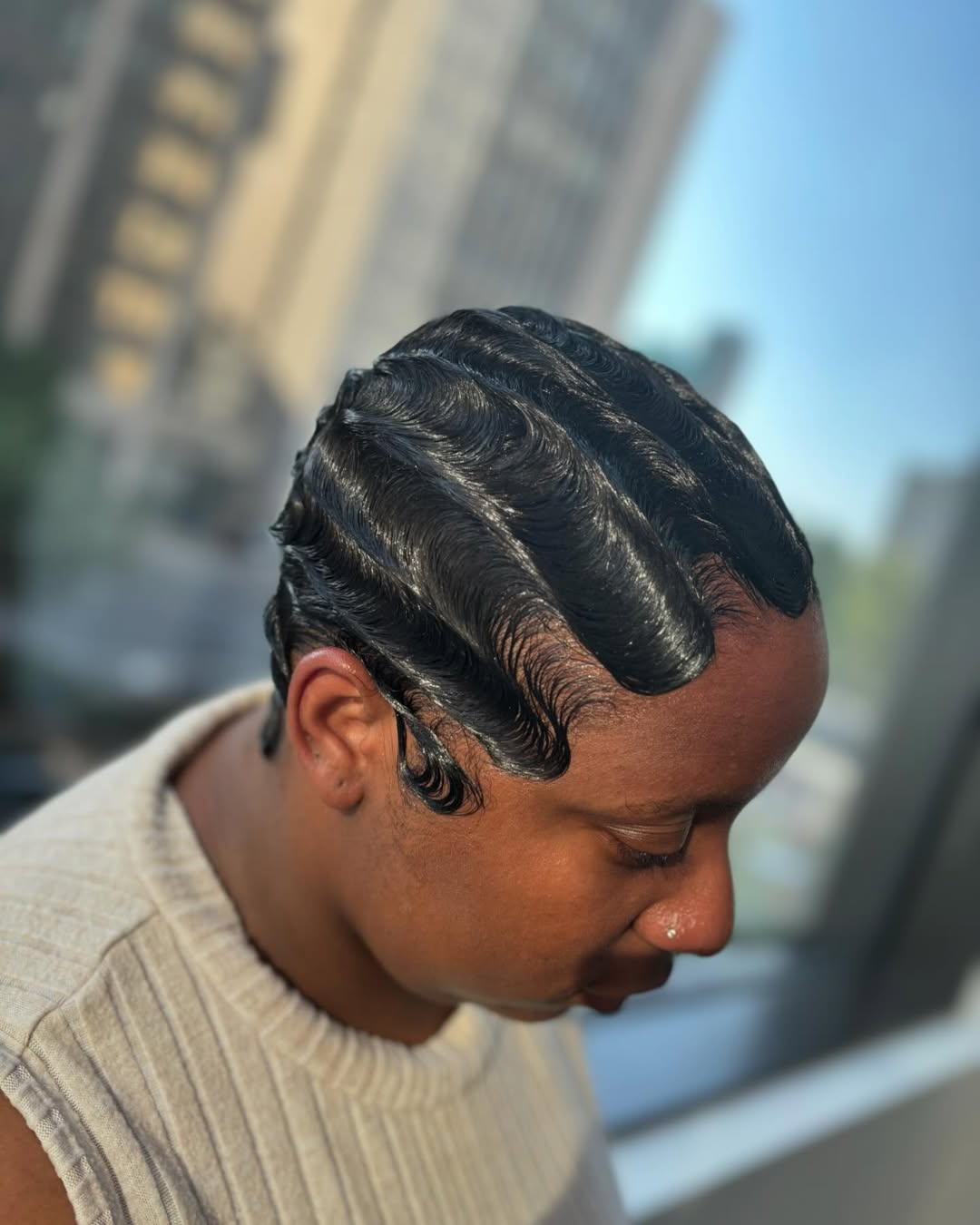
Credit@kekethehairstylist
Finger waves were a hairstyle that was glamorous and added sophistication to a person. Hair was styled into S shapes near the head with the help of a comb and gel. Finger waves were popular among musicians and performers of the time, and needed accuracy and a stable hand. This was a good style when attending a formal event or on the stage, as hair had a sculpted and smooth finish. Although they are rather high-maintenance, the finger waves are a trendy option when it comes to retro-themed style or a modern variation. Nowadays, they are frequently combined with fades or tapered sides, combining the old 60s style with modern tendencies.
Short Natural
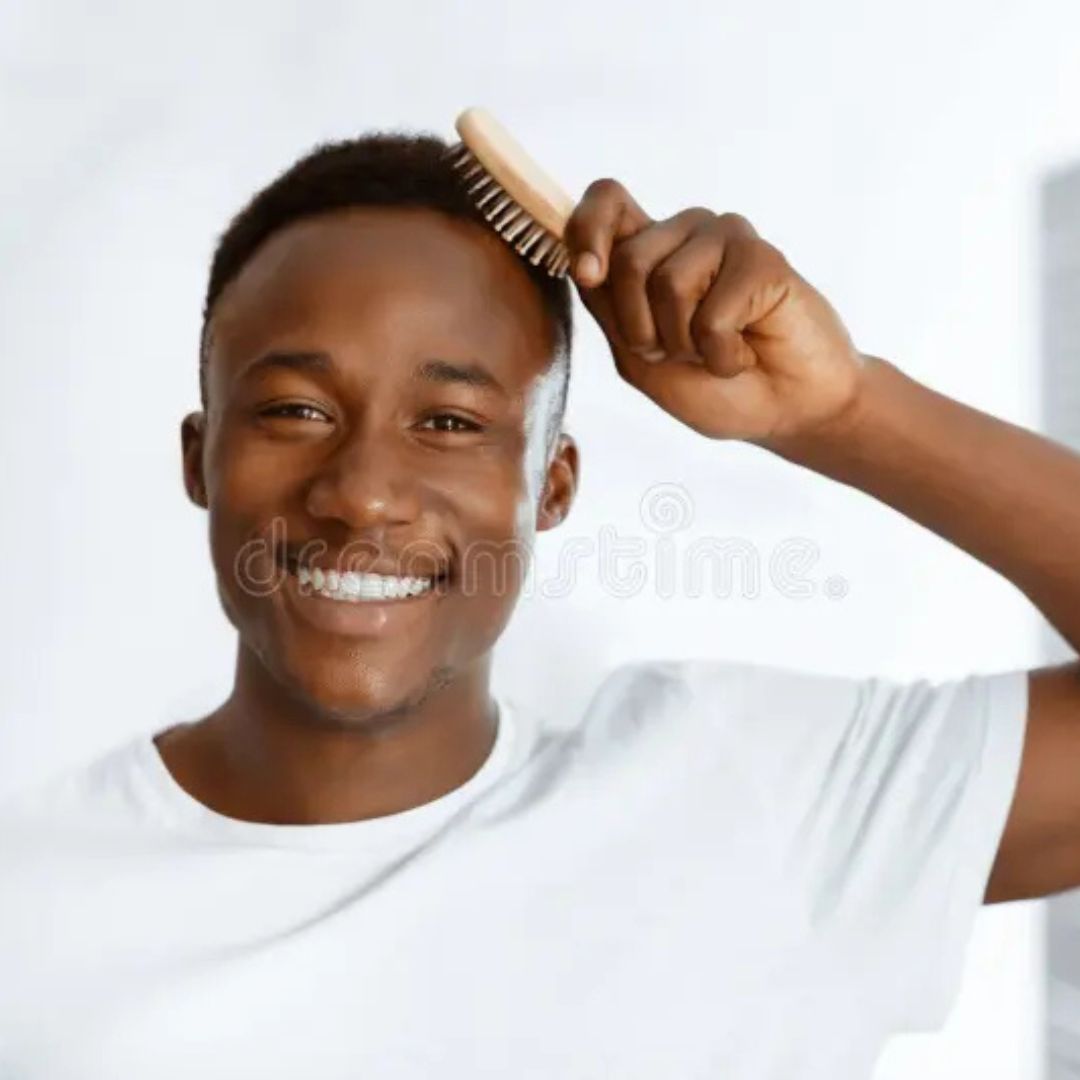
Credit@Dreamstime.com
The short natural was a low-maintenance hairstyle that was minimalistic and accepted the natural feel of Black hair. Hair was maintained short, well-rounded, and well-defined without using any chemicals. This was a style that stressed natural hair confidence and pride in the civil rights movement. It was casual wear that enabled men to have a clean and polished appearance without a lot of styling. The fades or line-ups could also be used together with short naturals, and this offered flexibility. Even now, it remains popular among men who enjoy a bare, convenient, and stylish appearance that represents heritage self-statement.
Pompadour Twist
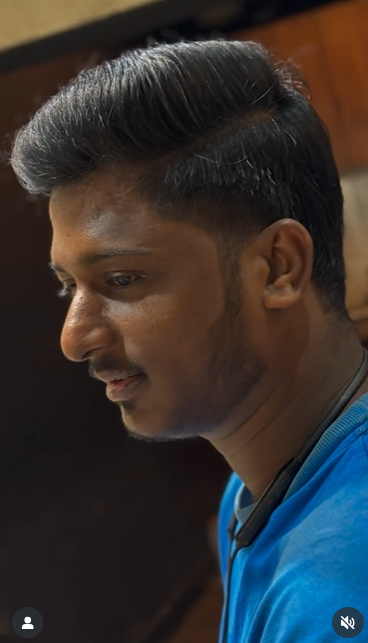
Credit@vinitas_kknagar
The pompadour twist was considered to provide height and volume to the front and side tapered. It was done by pulling the hair up and backward in order to produce a bold and fashionable figure. This was the hairstyle worn by fashionable entertainers and trendsetters in the sixties and needed styling gels or pomades to maintain its effect. It is very high in confidence, sophistication, and creativity, and therefore is suitable for both formal and casual events. In contemporary versions, the pompadour is frequently combined with fades or natural curls to maintain the old-fashioned flavor. The pompadour twist is another attention-grabbing hairdo that is a perfect blend of sophistication, audacity, and cultural savour.
Side-Parted Slick Back
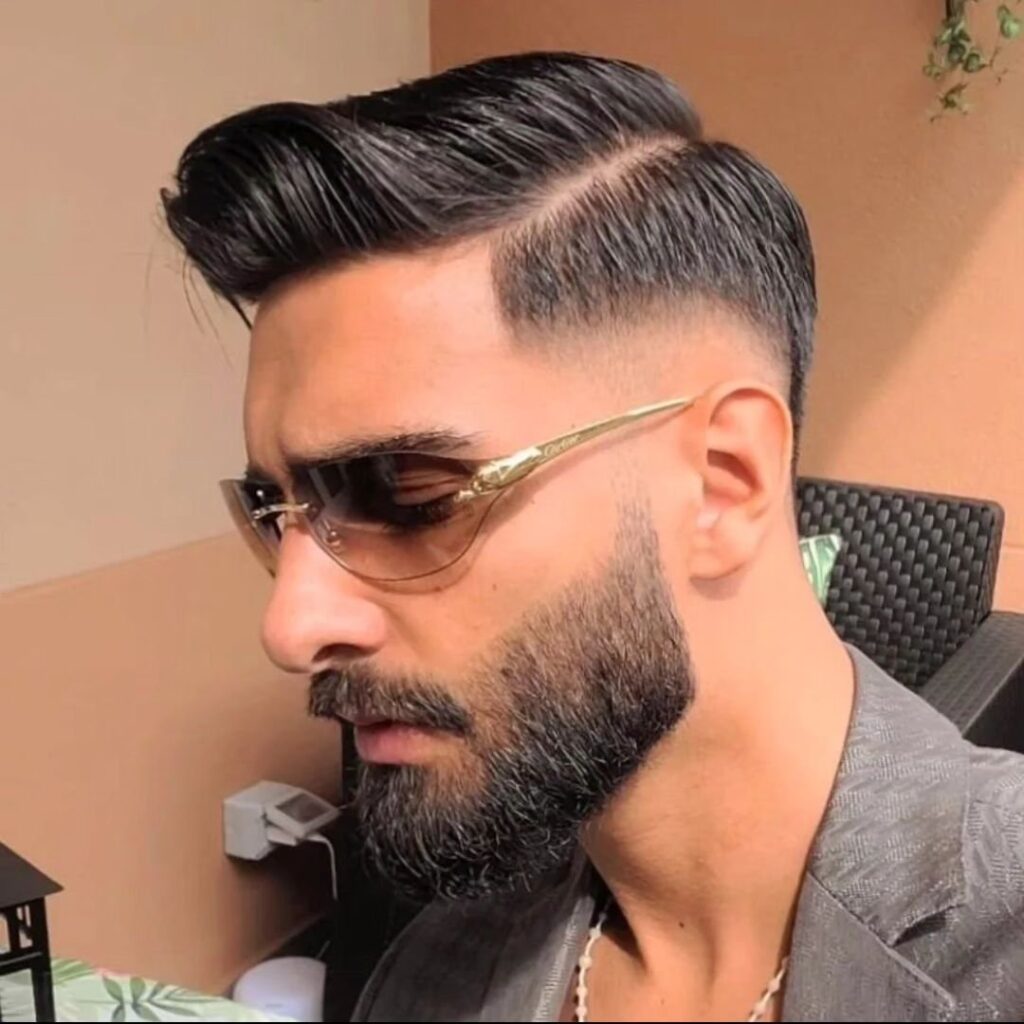
Credit@Well Groomed Gentleman –
The slicked back side part was a contemporary and sophisticated appearance of the early 1960s. Hair was parted and pushed to one side and secured with pomade or gel. This hairstyle was rather professional and polished, and was usually combined with suits and other official clothes. The slick back had to be kept up to keep the frizz at bay and shine intact. It was the symbol of sophistication and elegance, and it was popular among businessmen and entertainers. This retro hairstyle is currently reemerging, as it helps men to appear clean, retro-inspired, yet not having to put much effort into it, and still maintain the texture of their hair in order.
High Top Fade (Emerging Late 60s)
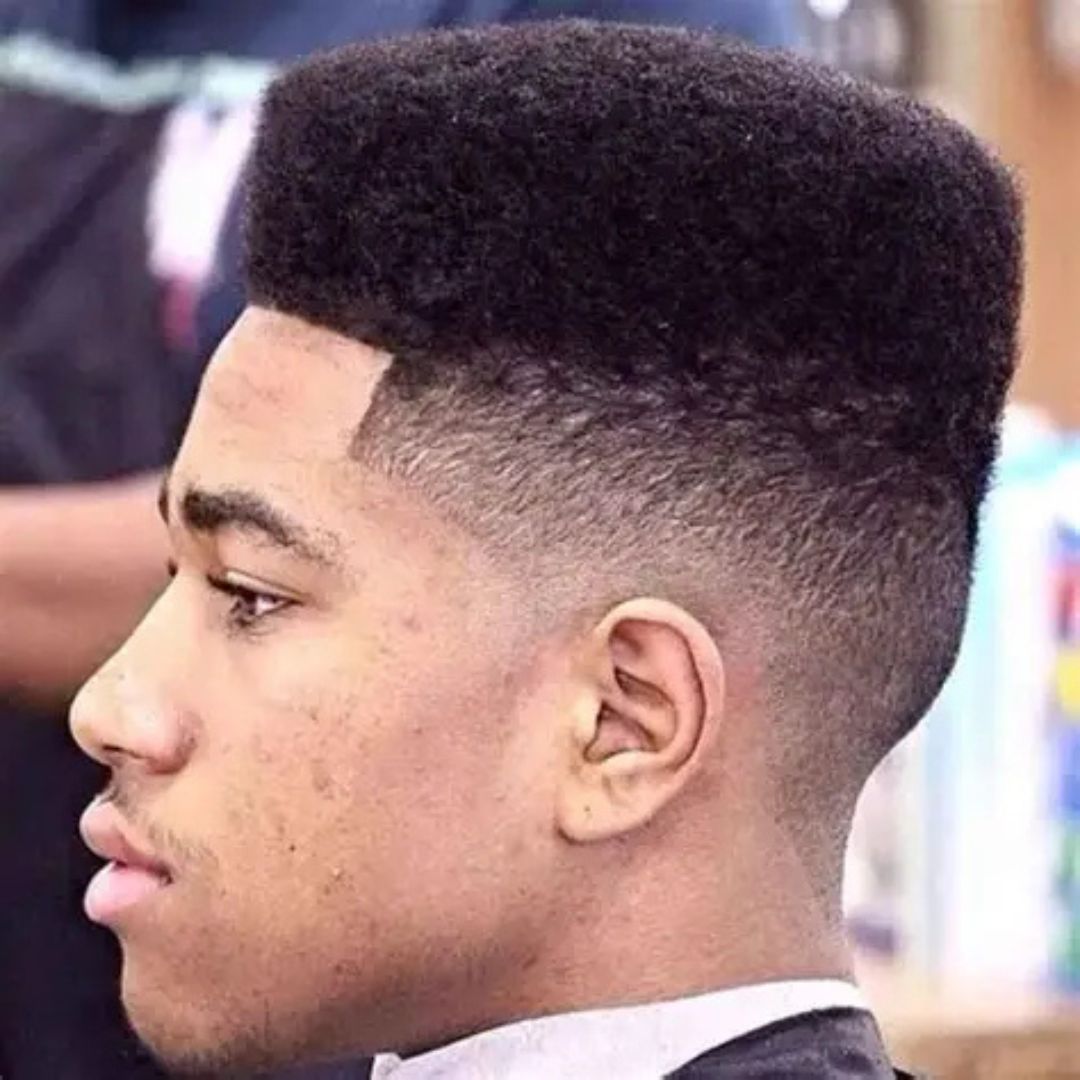
The top fade began to take shape as early as the late 60s, and it paved the way to the famous 70s style. The top hair was left longer and the sides shortened into a sharp point, which contributed to a geometric outline. Neat sides were remarkable, and this cut of hair enabled a person to be creative. It was still developing in the 60s, but it signified the shift from conservative cuts to more liberal, voluminous ones. The top fade is still used today as inspiration for haircuts, as the styles of the 60s decade influenced the development of further styles. It fits perfectly with men who want a high, structured and ,statement outfit.
Short Tapered Curls
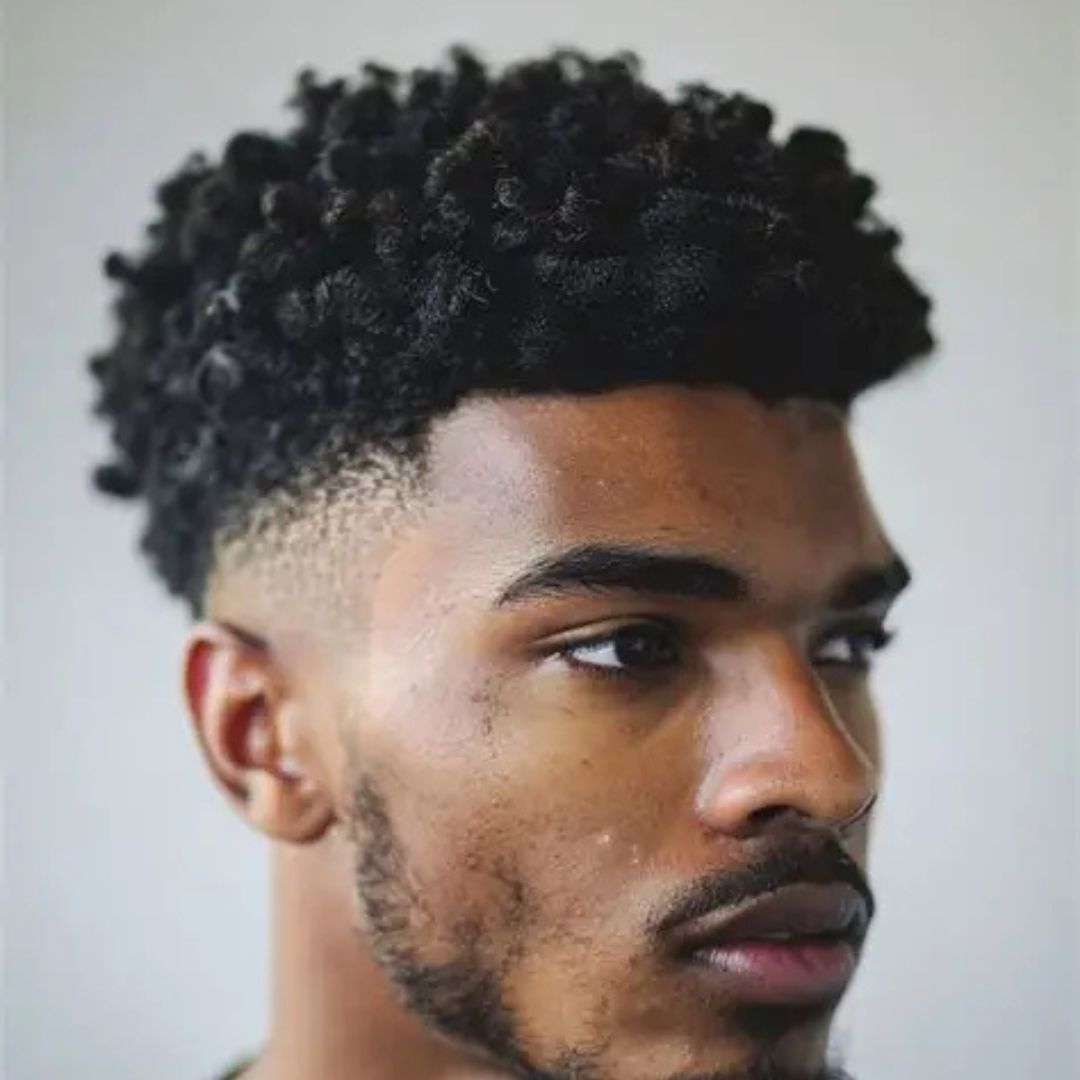
Natural texture was mixed with h clean finish with short tapered curls. The hair was cut very short and shaped in a slight taper, with curls kept in place but in check. Such a look combines style and comfort, which is why this look could be used in professional wear, casual, and everyday. It was a representation of natural hair, but in an orderly look, as it was done in the 1960s. Towards the end ,Trims and moisturizing kept the curls in good shape. In the modern but retro style, short tapered curls are a good choice for the male population who desire versatility, a low-maintenance style of hair that honors the natural textures of Black hair.
Tips for Styling 60s Black Male Hairstyles
- Moisturize consistently: Natural oils or leave-in conditioners should be applied to hair to ensure that it stays healthy, soft, and easy to handle, particularly Afros and natural curls.
- Apply the Right Comb or Pick: Wide-tooth combs or afro picks can be used to shape and keep the volume intact without breaking it.
- Styling Product: Pomades, gels, and hair creams are necessary to achieve smooth hairstyles such as Conks, finwavesave,s and slick backs.
- Keep Shape via Frequent Haircuts: Keep hair sidedges dg,es and general shape to appear clean cut.
- Keep Hair out of Nights: Scatter satin or silk scarves or pillowcases to avoid frizz and loss of moisture.
- Test with Parting and Patterns: Cornrows or finger waves can also have some creative patterns to be used.
- Combine Retro and new Fashions: Add textures or new touches to old hairstyles of the 60s to be current.
- Stay Natural: It is imperative to avoid over-styling hair with chemicals or heavy products; these may ruin it.
- Define Curls and Volume: Natural hairstyles with the use of curl creams or leave-in conditioners give the hair better texture and volume.
- Wear to Face Shape: Select 60s that match your face shape so as to balance and create harmony between the wear and the face.
Conclusion
The black male hairstyles of the 1960s still stand the test of time as the symbol of style, culture, and self-expression. Whether it was braided Afros or smooth Conks, they all had confidence, creativity, and pride in their natural hair. These ancient hairstyles remain part of the current trends in which a man can pay tribute to the past whilst exploring new ways in which it can be styled. You can wear it in a structured fade, finger waves, or cornrows, but such traditional styles will make your image more personal, stylish, and also culturally interesting.
FAQs
Q: What is the most maintainable black male hairstyle of the 60s?
A: Low tapers and short naturals are low-maintenance, which means that they need a minimum of daily styling and have a sleek appearance.
Q: Would I be able to get a ’60s Conk hairstyle now?
A: But nowadnowadaysere are chemical relaxers and heat-free processes that are safer and healthier than the alternative in getting sleek Conks.
Q: What are the ways of wearing g Afro?
A: Moisturizing the hair regularly, making it look like a wide-tooth comb or pick, and keeping it safe at night, will help to keep it volumized and healthy.
Q: Can cornrows be used in contemporary fashion?
A: Absolutely. Cornrows are fashionable, multifunctional, and important to the culture, and can be worn on informal or formal events.
Q: Which are the products that can be used to style 60s hairstyles?
A: Slick, defined, and moisturized hair requires pomades, hair gels, leave-in conditioners, and natural oils.
